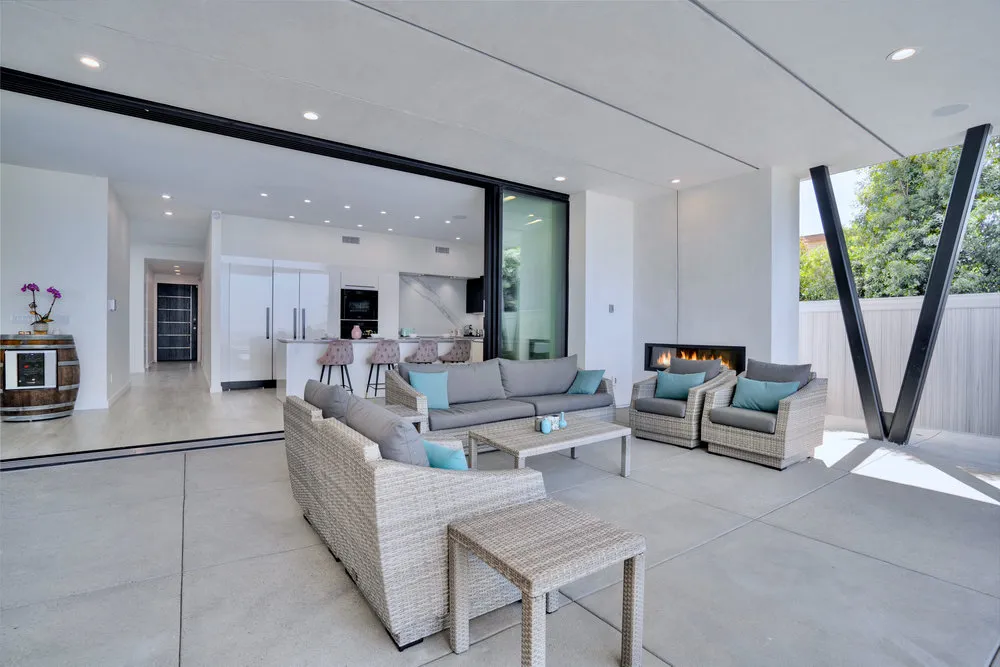
A home remodel can be an exciting journey, whether you’re looking to update a single room, overhaul your kitchen, or take on a full-house renovation. However, without proper planning, it can quickly become overwhelming. To ensure your remodel goes smoothly and stays on budget, having a clear and detailed plan is essential. Below is an essential checklist to help you plan your home remodel step by step.
1. Set Clear Goals for Your Remodel
Before diving into any design decisions or selecting contractors, it’s crucial to understand why you’re remodeling in the first place. Ask yourself the following questions:
- What is the main purpose of the remodel?
Are you looking to increase your home’s value for resale, update outdated spaces, or improve the functionality of your home to better suit your family’s needs? Knowing the primary goal will shape every decision you make throughout the process. - Which areas of your home need work?
Identify which rooms or spaces need the most attention. Whether it’s a kitchen, bathroom, or even the entire house, knowing which areas you want to focus on helps streamline the planning process. - What is your ideal outcome?
Visualizing the finished project is key. Think about how you want the space to feel and function. This will help you make design choices that align with your expectations.
2. Establish Your Budget
One of the most important aspects of planning any home remodel is setting a realistic budget. Home remodels can range from simple cosmetic updates to major renovations, and the costs can quickly add up.
- Be realistic about your financial situation.
Consider how much you can comfortably spend and factor in a buffer for unexpected expenses (typically 10-20% of the total budget). Keep in mind that a quality home remodel may come with a higher price tag, but it’s worth it for long-lasting results. - Prioritize your spending.
If you’re working within a tight budget, prioritize the aspects of the home remodel that will make the most impact, such as new countertops or cabinetry in the kitchen or updated plumbing and fixtures in the bathroom. - Research costs.
Take time to research the average cost of materials and labor for your specific home remodel. Websites like HomeAdvisor or Angie’s List can provide useful estimates for different types of home improvement projects.
3. Create a Timeline
Once you have a budget in mind, it’s time to establish a timeline for your home remodel. Home remodels can take anywhere from a few weeks to several months, depending on the complexity of the project. Some factors that can affect your timeline include:
- Scope of the remodel.
Are you just redoing the kitchen, or are you remodeling multiple rooms, including installing new plumbing or electrical systems? The more extensive the project, the longer it will take. - Contractor availability.
Your contractor’s schedule will also affect the timeline. The best contractors can often be booked months in advance, so plan accordingly. - Material lead times.
Some materials, like custom cabinetry, countertops, or appliances, may have long lead times. Make sure to order these items well in advance to avoid delays later in the process.
4. Hire a Professional Team
For many home remodels, hiring the right professionals is essential to ensure a successful project. While you can handle some aspects of the remodel yourself (like painting or light demolition), more complex tasks (like electrical work, plumbing, or structural changes) should be left to the experts.
- Research and select a contractor.
A general contractor is often the best option for large remodels, as they manage all aspects of the project. Look for a licensed and insured contractor with a proven track record in remodeling. Ask for recommendations, read online reviews, and check their portfolio of past work. - Other professionals you may need:
Depending on the scope of your remodel, you may also need to hire specialized professionals, such as:
- Architects (for major structural changes)
- Interior designers (for help with layout and design)
- Plumbers and electricians (for installations or updates)
- Landscapers (for outdoor renovations)
- Request multiple quotes.
Always get at least three quotes from contractors before making a decision. This will give you an idea of fair pricing and help you find a contractor who aligns with your vision and budget.
5. Design and Material Selection
The design phase is where your vision truly comes to life. Whether you have a clear idea of what you want or need some help from a designer, it’s essential to consider how the design will impact the functionality and aesthetic of your space.
- Define your style.
Are you going for a modern, minimalist look or a more traditional design? Having a clear idea of the style you want will guide your design and material selection. - Choose durable materials.
Materials like high-quality hardwood, granite, and porcelain are often ideal for their durability and longevity. For areas like the kitchen or bathroom, be sure to select materials that can withstand daily wear and tear. - Consider energy-efficient options.
Remodeling is the perfect opportunity to incorporate energy-efficient materials and appliances. From low-flow toilets to energy-efficient windows and LED lighting, these small updates can reduce your home’s environmental footprint and lower your utility bills. - Get input from professionals.
If you’re unsure of what materials or finishes to choose, consult with your contractor or designer. They can offer valuable insight into what will work best for your project and budget.
6. Obtain Necessary Permits
Depending on the scope of your remodel, you may need to apply for permits. Some common home remodeling projects that require permits include:
- Structural changes (like removing or adding walls)
- Electrical or plumbing updates
- Major additions, like a new room or deck
Check with your local government or hire a contractor who is familiar with local building codes and regulations. Getting the right permits is crucial to avoid fines or having to redo parts of the remodel.
7. Prepare for Disruption
Remodeling your home, especially a major project, can disrupt your daily life. Be prepared for some inconvenience and noise during the process. Depending on the scale of your remodel, you may need to temporarily relocate to another area of your home or rent a place to stay.
- Set up a temporary living situation.
For large remodels, you may want to set up a temporary kitchen or bathroom area to make the disruption as minimal as possible. Consider making arrangements in advance for a space to stay if necessary. - Expect mess and noise.
Remodeling is messy, and you should expect some noise during the process. Make sure your family is ready for these temporary disruptions.
8. Track Progress and Communicate Regularly
Throughout the home remodel, staying in touch with your contractor is essential. Regular communication helps ensure the project stays on track and any issues are addressed promptly.
- Visit the site often.
If possible, visit the job site regularly to check on progress. This will help you ensure that work is being done to your satisfaction. - Stay on top of changes.
Remodeling projects often evolve as work progresses. Be prepared to make quick decisions if issues arise or if you need to make design changes. Your contractor should be your main point of contact for updates.
9. Final Walkthrough and Inspection
Once the home remodel is complete, do a final walkthrough of the space with your contractor. Inspect the work carefully to ensure that everything is done to your specifications. Check for any issues that may need addressing before the final payment is made.
Conclusion
Planning a home remodel requires careful preparation, but the results can be incredibly rewarding. By following this checklist, you can ensure that your remodel stays on track, within budget, and meets your goals. Whether you’re remodeling to increase your home’s value or simply to create a space that better fits your needs, RestoraCore is here to guide you through every step of the process to make your dream home a reality.

